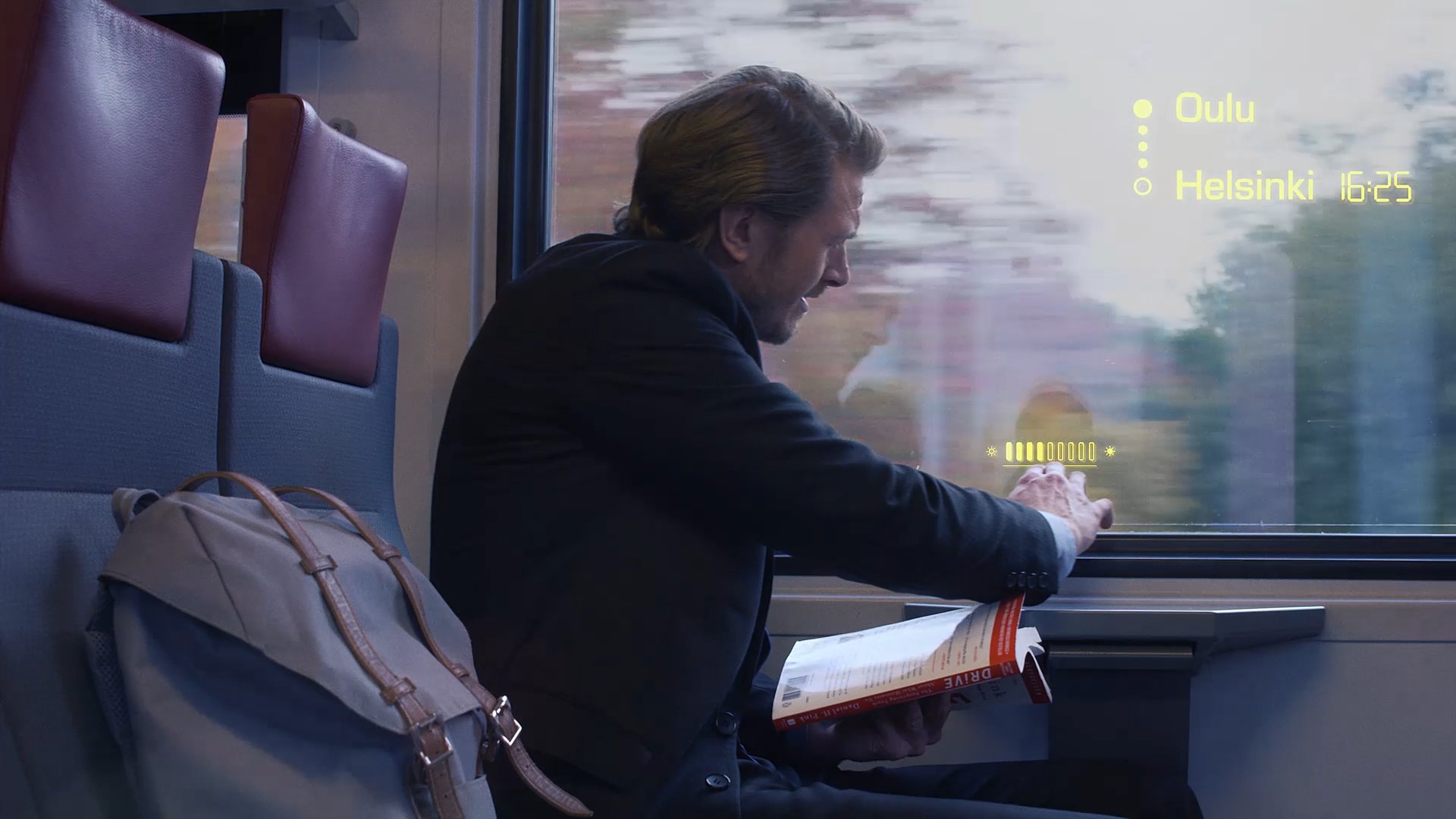LUMINEQ hosted a webinar regarding transparent touch display controlled smart windows. The webinar was well received by over 300 attendees from the transportation industry. The majority of the attendees are manufacturers of cars, trucks, vans, and glass.
In this article, we will summarize the following key takeaways of the webinar.
- Transparent displays in laminated glass
- Touch technology
- Examples of dimming technology
- Use cases
- Customization
- Demos
If you would like to watch the whole webinar recording, please submit the form from the link below.
Transparent displays in laminated glass
LUMINEQ transparent displays can be embedded into the laminated glass.
Laminated glass is produced by bonding two or more layers of ordinary annealed (tempered) glass with a plastic interlayer. The interlayer is typically polyvinyl butyral (PVB), ethylene-vinyl acetate (EVA), or thermoplastic polyurethane (TPU).
![]() The plastic interlayer is sandwiched by the glass and heated to form the initial melting and eliminate air pockets and bubbles.
The plastic interlayer is sandwiched by the glass and heated to form the initial melting and eliminate air pockets and bubbles.
Then these constructions are heated under pressure in an autoclave or oven to achieve the final bonded product (fully crosslinked in the case of the thermoset EVA).
Laminated glass is used for vehicle windshields and windows for many reasons.
- Increased safety and security: Laminated glass is harder to break. If it does break, the broken glass will stick to the plastic rather than shattering everywhere. It can be designed to withstand bullets and bomb blasts.
- Sound Reduction: The viscoelastic properties of the interlayer material considerably reduce sound transmission.
- Solar Energy Control: It reduces heat gain and controls glare.
- UV Control: UV-absorbing additives in the interlayer can screen out almost all damaging UV rays.
- Weather/Natural Disasters: Laminated glass can be designed to remain intact under impact and keep the envelope of the building sealed.
- Durability: There will be no water/moisture infiltration, and it maintains its color and strength over time.
- Design Versatility: It can be flat or curved, wired, tinted, have designs printed on the interlayer, and/or produced with reflective glasses
LUMINEQ display is 0.7mm thick, which can be perfectly embedded into a typical PVB layer of 0.76mm thickness. The image below shows the structure of a transparent display embedded in the laminated glass stack.
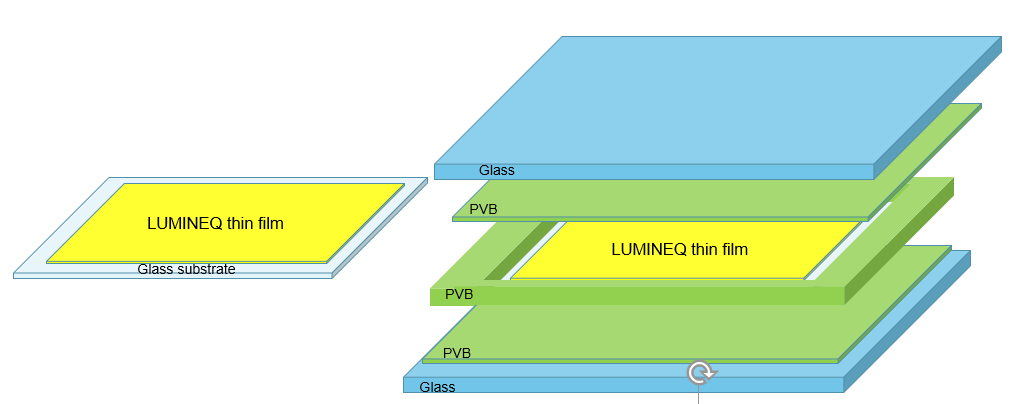
Our transparent display is available as a thin film deposited on top of a 0.7 mm glass substrate. This display layer will be placed inside the PVB layer of 0.76 mm thickness where a hole is cut for the display. We recommend using two layers of interlayer on either side of the display so that there is no glass on glass in the stack, along with a cut piece of interlayer that our display fits into. The interlayers are then sandwiched by two or more layers of glass.
You can add additional function layers like dimming layers in the smart window case.
Read more about how our transparent display works with laminated glass.
Touch technology
The thin film deposited on the glass substrate includes a conductive layer, a phosphor, and another conductive layer. We use the same ITO layers for patterning the conductive layers and for touch sensing. The touch screen technology is based on capacity function. The LUMINEQ in-cell touch technology has the following advantages.
- High transparency: There is no additional touch layer, so the transmission will not be compromised.
- The surface is glass and easy to clean. It is essential for touch applications.
- The touch function stays the same after the display is laminated in glass.
- Water de-sensitive: The LUMINEQ touch technology has been engineered to work even in the heaviest rain and in extreme temperatures.
- The touch works through the glass of 4mm thickness. Operation through thicker glass is also possible if it is required for your application.
Read more about our transparent touch displays.
Examples of dimming technology
There are multiple dimming technologies when it comes to smart glass. Ari explained two different technologies in the webinar: PDLC Polymer Dispersed Liquid Crystal and SPD Suspended Particle Device.
PDLC Polymer Dispersed Liquid Crystal
When inactive the liquid crystals are randomly arranged, thus scattering the light as it permeates the screen, which results in the translucent, milky appearance of the assembly. But when you apply a voltage, an electrical field is created between the two electrodes. It causes the liquid crystals to align, allowing light to pass through and essentially turning the screen transparent.
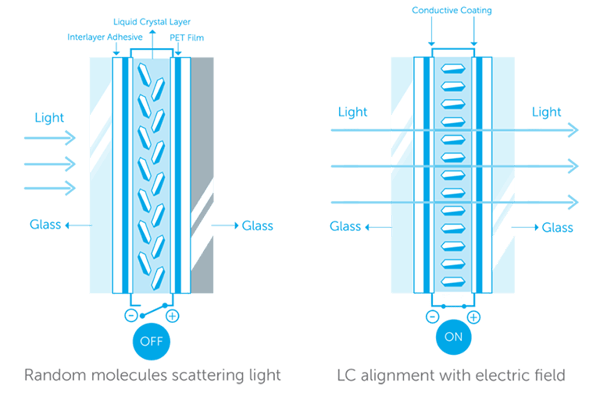 Image from ScienceDirect
Image from ScienceDirect
SPD Suspended Particle Device
In a smart window, millions of these SPDs are placed between two panels of glass or plastic, which is coated with a transparent conductive material. When electricity comes into contact with the SPDs via the conductive coating, they line up in a straight line and allow light to flow through. Once the electricity is taken away, they move back into a random pattern and block light.
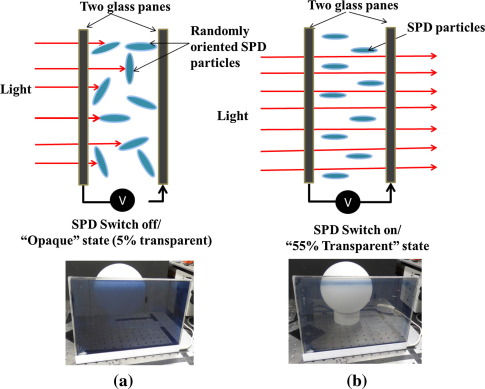
Image from Gauzy
We did a dimmable window demonstrator in a joint operation with one of our laminator partners using SPD.
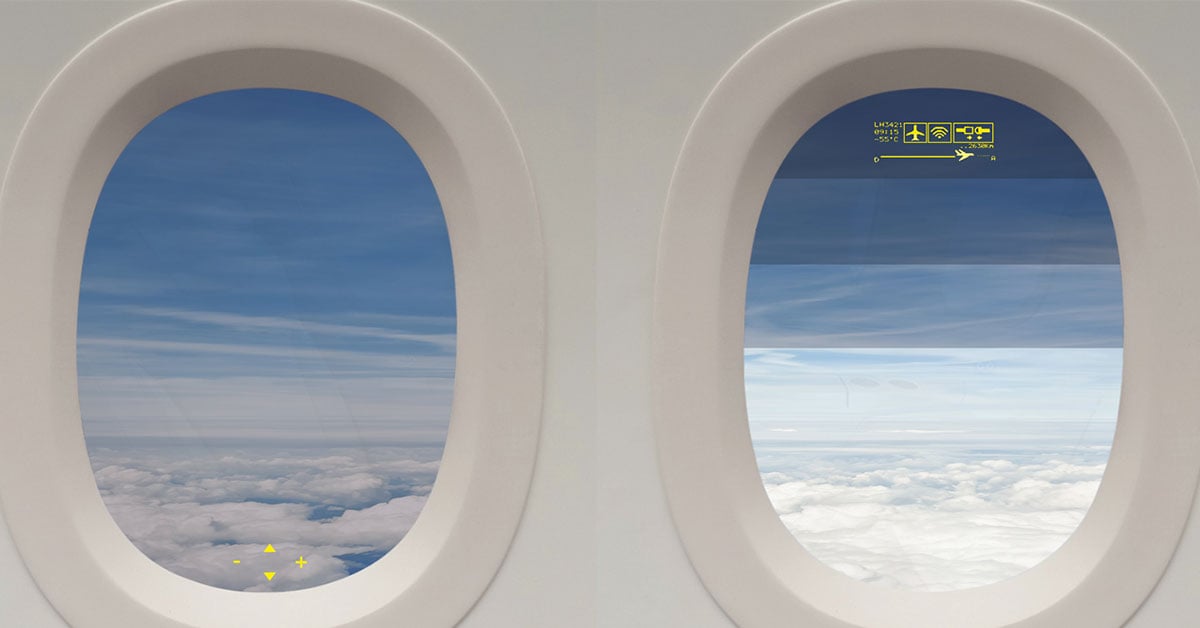
Use cases
Transparent keypad for vehicle entry
We introduced our new transparent keypad demo in May and raised lots of interest in the transportation industry. By integrating a transparent keypad lock into the glass window of a vehicle, vehicle manufacturers bring an unprecedented stylish keyless entry system to vehicles.
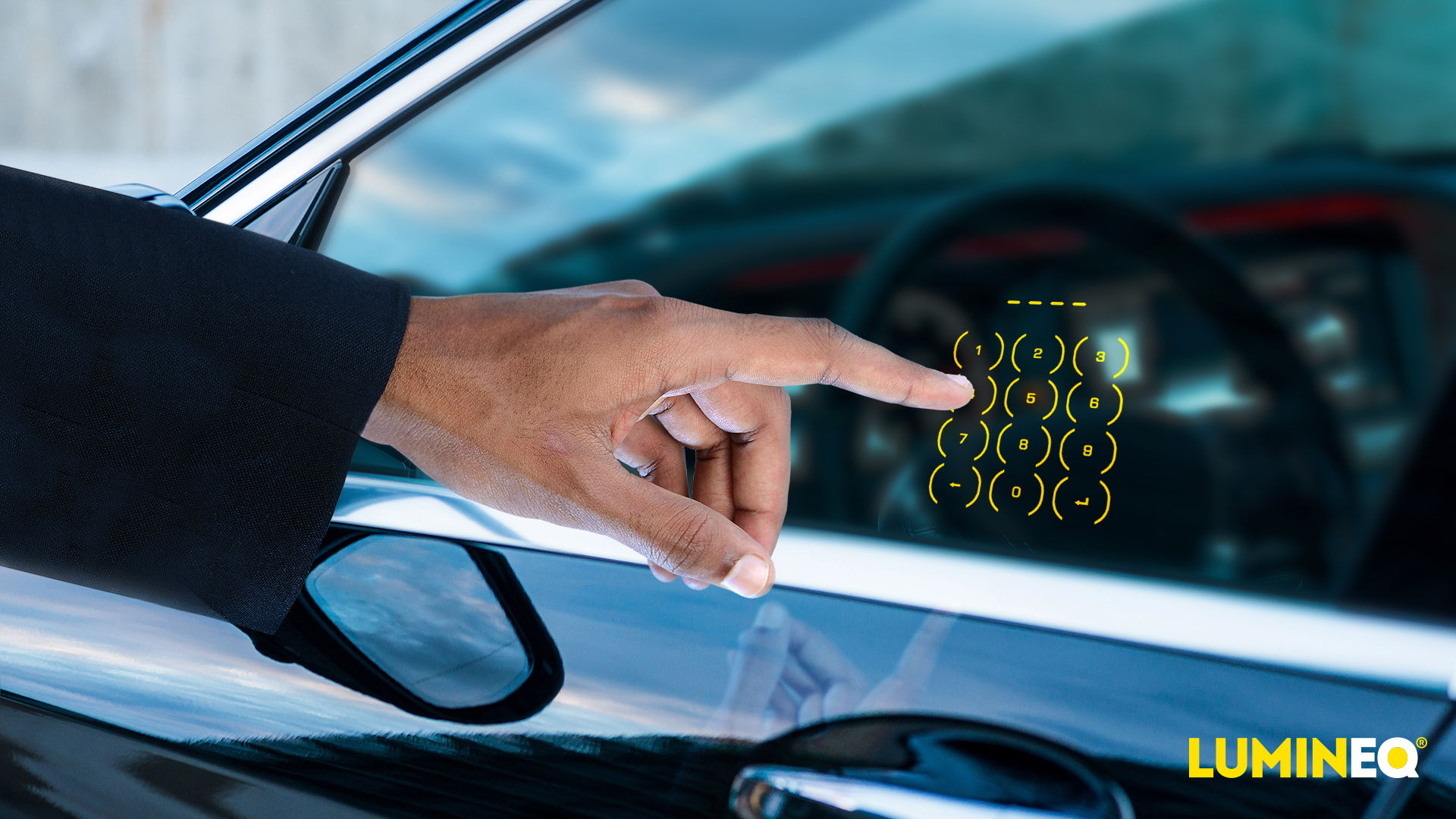
Ari illustrated the benefits of a keypad entry in different scenarios. For instance, you can leave all your stuff including car keys and mobile phones to the car when you go swimming on the beach. It is a smart way to manage access to shared vehicles. Think about a construction site where facility managers can grant access to different operators remotely by providing codes that unlock the excavator.
Vehicle dynamic tinting
LUMINEQ transparent display can be used to control the dimming of the vehicle window or sunroof. This application has been used on the world’s fastest maglev train debut in China in July. Passengers can manually adjust the amount of coming-through sunlight by pressing the lit-up buttons "+" or "-" on the window glass. The transparent displays are embedded in glass, as rugged as the four-layer glass itself. It is also possible to set up the touch display to adjust automatically according to the travel routes.
Vehicle general
In-glass displays can be integrated into any vehicle window to show information you may need to know when you step out of the car, such as charging status, tire pressure, washing fluid situation, etc. The information can be displayed in a rotating mode, controlled by the touch button on the window.
Glass accounts for one-third of the vehicle surface. By utilizing the glass area, whether it is to display information or to add touch-controlled functionalities, vehicle manufacturers are empowered to break traditional design boundaries and bring the travel experience to a whole new level.
Customization
We provide stand-alone demonstrators for evaluation and prototyping purposes. When it comes to mass production, customers usually require custom displays tailoring to their specific design needs. We offer customization services. Anything can be customized, from the displayed content, shape of the display, connection area, electronics, interface, and flexible printed cable.
Supported interfaces include but are not limited to the following.
- SPI
- I2C
- CAN
- RS-485
- NMEA
Demos
Transparent keypad touch demo
Keypad touch demo is developed as an innovative keyless entry system for vehicles. Read more about keyless entry solutions.
Sign up for future webinars
We will organize more webinars in the future. If you would like to get notifications of our upcoming webinars, please subscribe to our mailing list.
